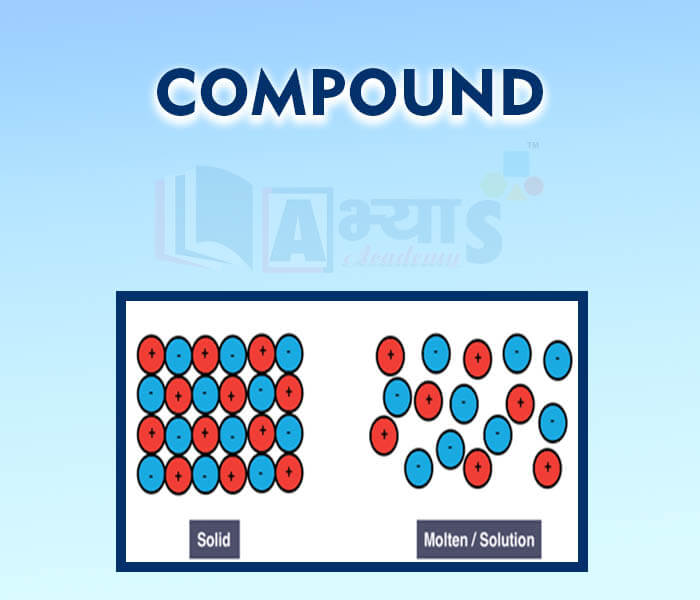Compound













Compounds
A compound is a pure substance formed from two or more elements chemically combined together in a definite proportion. A compound can only be decomposed by a chemical action into two or more simpler substances. For example, lime is a compound of calcium and oxygen. Its chemical formula is CaO. Similarly, water is a compound of hydrogen and oxygen. The chemical formula of water is . Other examples of compounds are ammonia (
), carbon dioxide (
), chalk (
), hydrogen chloride (
) and ammonium chloride (
).
Properties of compounds:
Arrange the following substances in the ascending order of the number of constituent elements (S) present in them.
| |||
| Right Option : A | |||
| View Explanation | |||
Identify the true statement among the following : | |||
| Right Option : D | |||
| View Explanation | |||
Which of the following are not the properties of compound ? (1) Substances mix in any ratio (2) Elements combine chemically to form a compounds (3) Their constituents can be separated by simple physical methods. (4) Their constituents cannot be separated by simple physical methods | |||
| Right Option : D | |||
| View Explanation | |||
Students / Parents Reviews [10]
It was good as the experience because as we had come here we had been improved in a such envirnment created here.Extra is taught which is beneficial for future.

Eshan Arora
8thOne of the best institutes to develope a child interest in studies.Provides SST and English knowledge also unlike other institutes. Teachers are co operative and friendly online tests andPPT develope practical knowledge also.

Aman Kumar Shrivastava
10thBeing a parent, I saw my daughter improvement in her studies by seeing a good result in all day to day compititive exam TMO, NSO, IEO etc and as well as studies. I have got a fruitful result from my daughter.

Prisha Gupta
8thAbhyas is a complete education Institute. Here extreme care is taken by teacher with the help of regular exam. Extra classes also conducted by the institute, if the student is weak.

Om Umang
10thAbout Abhyas metholodology the teachers are very nice and hardworking toward students.The Centre Head Mrs Anu Sethi is also a brilliant teacher.Abhyas has taught me how to overcome problems and has always taken my doubts and suppoeted me.

Shreya Shrivastava
8thMy experience with Abhyas academy is very good. I did not think that my every subject coming here will be so strong. The main thing is that the online tests had made me learn here more things.

Hiya Gupta
8thIt was a good experience with Abhyas Academy. I even faced problems in starting but slowly and steadily overcomed. Especially reasoning classes helped me a lot.

Cheshta
10thA marvelous experience with Abhyas. I am glad to share that my ward has achieved more than enough at the Ambala ABHYAS centre. Years have passed on and more and more he has gained. May the centre flourish and develop day by day by the grace of God.

Archit Segal
7thIt has a great methodology. Students here can get analysis to their test quickly.We can learn easily through PPTs and the testing methods are good. We know that where we have to practice

Barkha Arora
10thAbhyas Methodology is very good. It is based on according to student and each child manages accordingly to its properly. Methodology has improved the abilities of students to shine them in future.
